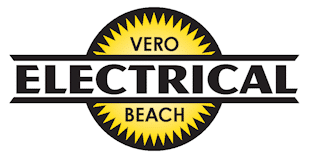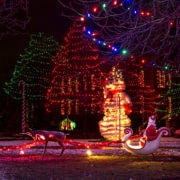Holiday Lighting Tips

A Santa in his sleigh, reindeer, and a giant snowman, and a nativity scene are part of a festive outdoor Christmas display on a village square
This is the time of the year when we want our homes to look festive. It’s also the time of year where not setting things up properly can cause problems. Here are some tips for doing things right when it comes to your Holiday outdoor lighting.
Tip number one. Make sure to have extension chords which are in good shape and are rated for outdoor lighting. Do not use indoor extension chords for your outdoor lighting. They are two different types of cords and while you can use an outdoor extension cord indoors, never ever use an indoor extension chord outside. Hunker.com , Mitchell Brock, explains it this way:
“Insulation
The main difference between indoor and outdoor extension cords is the insulation used in their construction. Indoor extension cords do not have the same materials and protective insulation as outdoor extension cords do. Outdoor cords are made with durable insulation to protect against moisture and temperature changes. Sunlight can also break down the insulation used for indoor extension cords, but outdoor extension cords use a special material to protect against light damage. Outdoor extension cords are also constructed to prevent damage from chemicals, such as oil.
Gauge
The gauge of an extension cord is determined by the size or diameter of the conducting wires inside. Larger-gauge conducting wire allows more current to flow through the extension cord, which is required at greater lengths and for different pieces of equipment. Indoor extension cords rarely come in lengths longer than 25 feet, while outdoor extension cords come in lengths up to 150 feet or more. You will need the proper combination of gauge and distance specifications to safely power your appliances.
To power a leaf blower, for instance, you’ll need a 16-gauge light-duty cord within 50 feet of an outlet. An indoor table lamp will need an 18-gauge cord specified for up to 25 feet. A circular saw requires a 12-gauge, heavy-duty outdoor extension cord for up to 100 feet. An indoor vacuum can use a common 16-gauge indoor extension cord.
Plug Type
Another difference between indoor and outdoor extension cords is the plug type used. Many indoor extension cords have a two-prong plug, and outdoor extension cords come with a three-prong plug. The third prong on the extension cord is a grounding wire that reduces the risk of electrical shock or fire. A two-prong extension cord is generally used on lamps or small appliances found indoors. A three-prong plug is only used with an outlet that has a ground slot. Combining a three-prong-plug extension cord with a two-prong-plug extension cord can be hazardous.”
While it’s tempting to just pull out the bucket of lights and start putting them up, stop for a minute or two. Check all the lights, make sure they are working, and if you can, make a plan. The take some measurement and make certain you have enough lights to cover the area.
There’s nothing worse than being up on a ladder and running out of lights when you are almost done. It’s also a good idea to have someone watching, just in case there is a problem. If you don’t have the right ladders, don’t reach, find someone who has a taller ladder and don’t take the chance of falling.
Kelley McCabe


Leave a Reply
Want to join the discussion?Feel free to contribute!